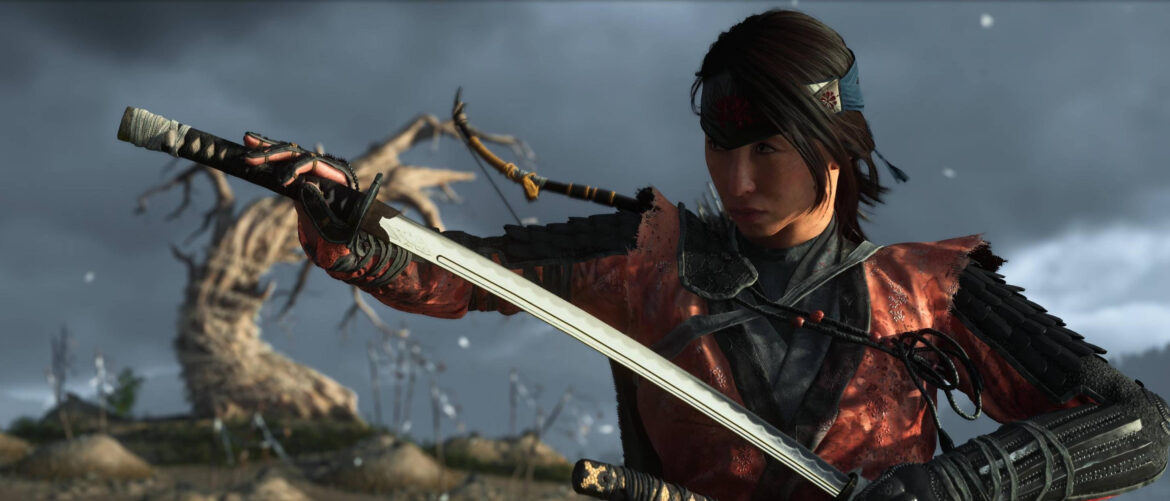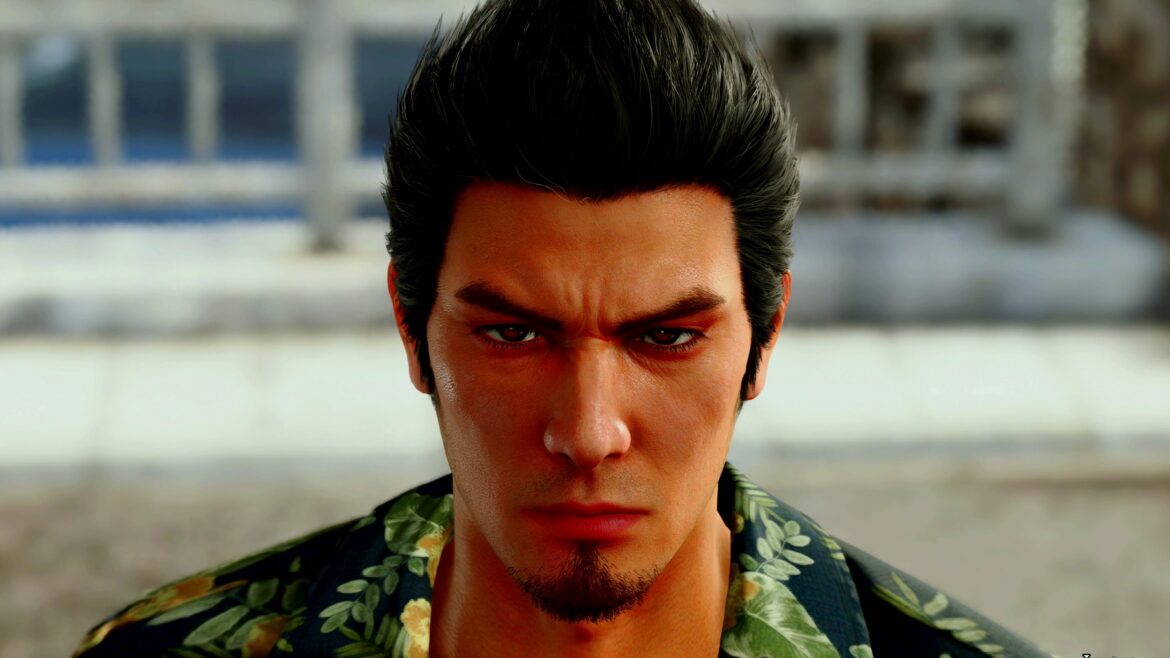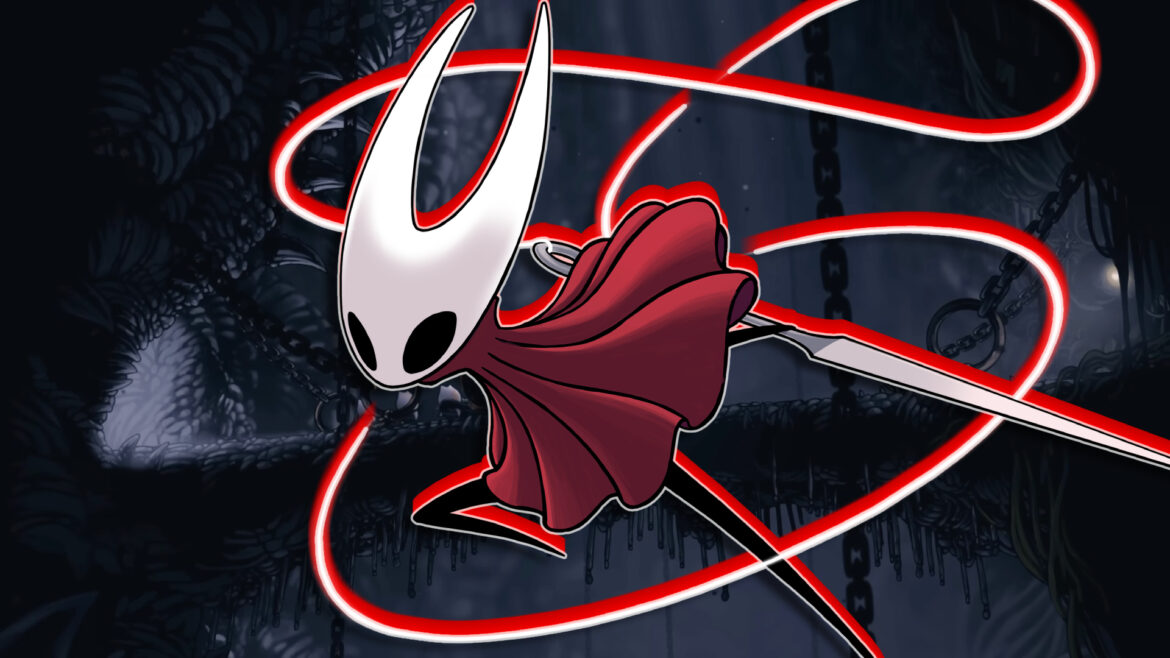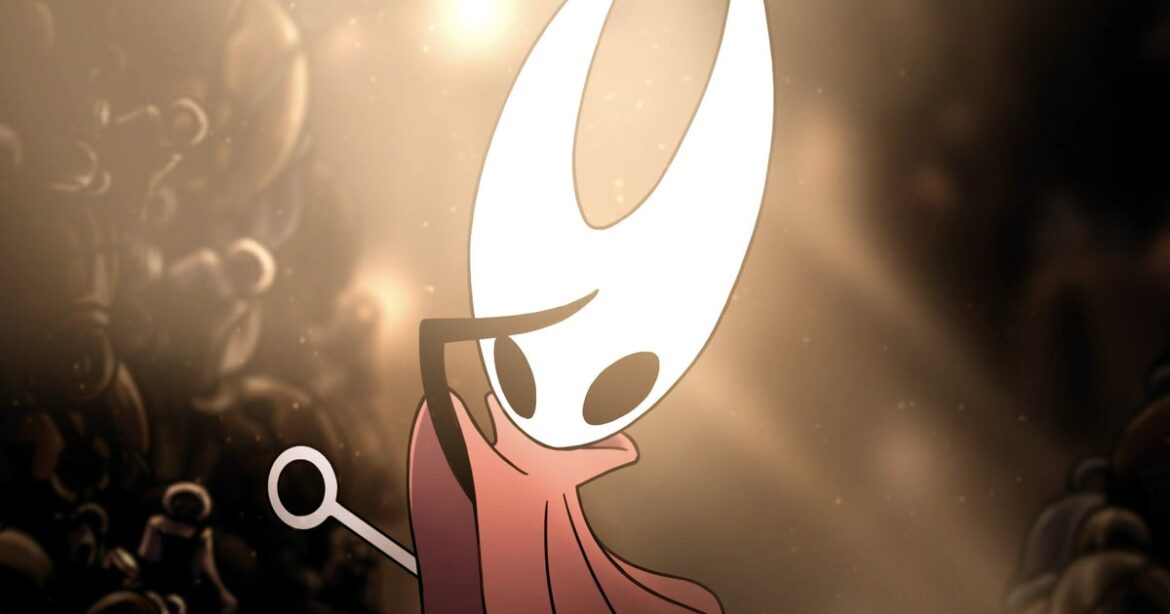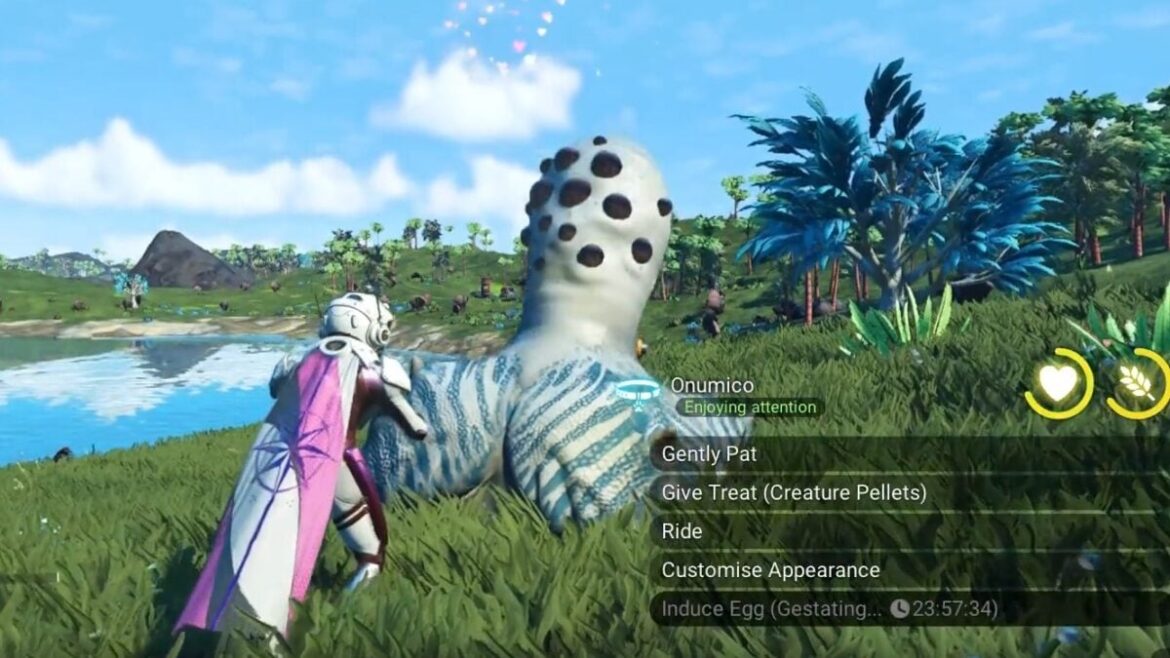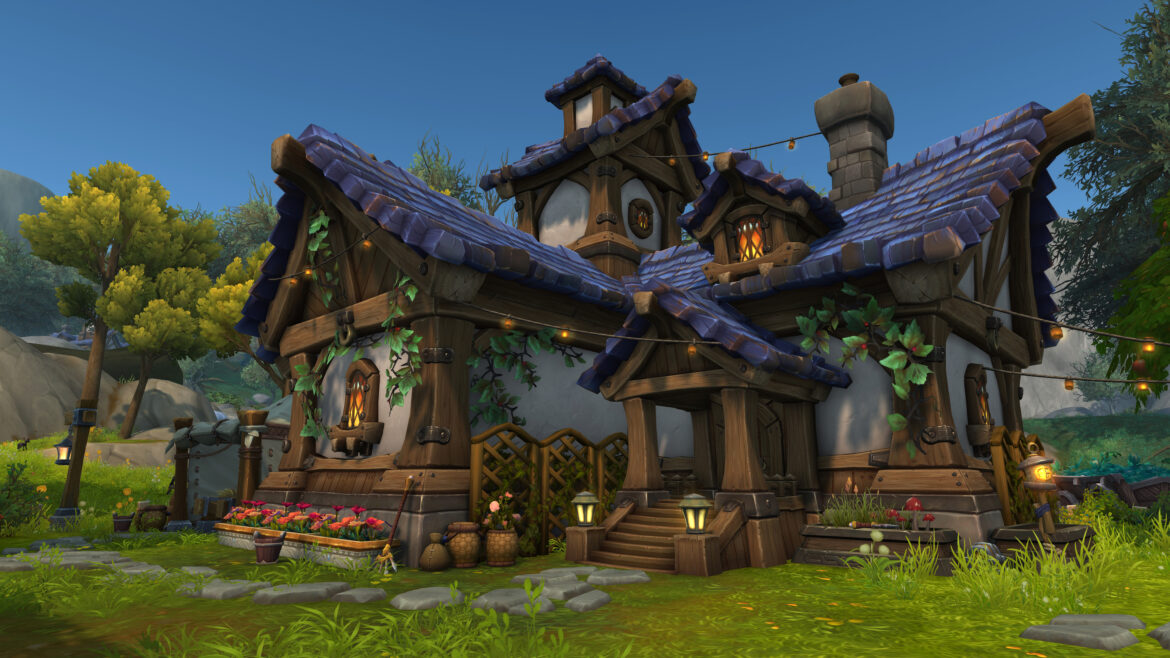Why you can trust TechRadar
We spend hours testing every product or service we review, so you can be sure you’re buying the best. Find out more about how we test.
I have caught myself reliving riding my horse across Ghost of Yotei’s landscape of 17th-century Japan almost every time I’ve put the game down since starting it.
From the simplest of jogs between locations, or the longest of horse rides across sweeping lands, through fields, and over rivers, there’s just something truly beautiful about it that has consumed me.
Review info
Platform reviewed: PS5
Available on: PS5
Release date: October 2, 2025
- Ghost of Yotei at Amazon for $69
And while the world of Ghost of Yotei is one of the best I’ve played in years, and one of the most spectacular things about the game, it’s only one of a number of highlights in the PS5 exclusive.
The worldbuilding and sense of place the lands offer is supported by an epic tale that twists and turns, an interesting protagonist who develops as the story goes, multi-faceted, immense, and bloody, moreish combat, and a smattering of enjoyable open-world and role-playing game (RPG) staples. Which, even though they can be repetitive sometimes, also bring much value and meat to the experience.
It wears the influence of its predecessor on its sleeve prominently, but Ghost of Yotei has been more than worth the wait.
(Image credit: Sony/PlayStation/Sucker Punch)
A tale for the ages
Set a few hundred years after Ghost of Tsushima, you are Atsu an outlaw making a return to her homeland of Ezo with revenge on the mind. Be prepared to hear the phrase “The Yotei Six” an awful lot in the first half of the main story in particular, as that is who Atsu is chasing down: six masked-up baddies who inflicted great pain on her and her family when she was a child.
Complemented by intriguing flashbacks that give greater context to that original pain, the story of Atsu chasing after these six almost-mythical enemies is an epic one. It has twists and turns and is deeply cinematic and gripping, and Atsu and the change she experiences along the way make her a compelling protagonist. You can feel the anger and deliberation in her encounters, in her visceral combat actions; and you can see how her relentless pursuit of justice changes her outlook along the way, too.
And while the premise of hunting down the six masked big bads is similar to Assassin’s Creed: Shadows, a linear revenge tale, and checking off an assassination hitlist, this is not. There are more layers to the story and to each of the narratives around the enemies to get stuck into.
Image 1 of 3
(Image credit: Sony/PlayStation/Sucker Punch)(Image credit: Sony/PlayStation/Sucker Punch)(Image credit: Sony/PlayStation/Sucker Punch)
Experiencing the beauty of nature
That stylish way that the story is delivered is indicative of the lands that it takes place in, too – as well as how you explore it.
Firstly, the scenery and sense of place in the game’s landscapes and environments are wonderful. From expansive, sweeping fields of grasses and flowers bathed in sunshine, to the icy mountainsides of an arctic, wintry region. And from the spring-like, verdant, and lush fluvial landscapes either side of meandering waterways to the gorgeous and blinding oranges and golds of hundreds of trees in their autumn form, all four seasons are draped over the landscapes of Ghost of Yotei beautifully.
As well as offering sheer beauty, everything seems truly part of the environment; each location does seem purposefully placed, sprouting from the ground or perched on it intentionally.
There’s also a wider use of the landscape to create ‘landscape moments’ as I call them; using the wind for guidance is a sheer joy once again, throwing up thousands of flower petals as you bound across plains is a thrill, and there’s a few moments where your ride across the countryside or along winding tracks is accompanied by wonderful and haunting songs.
(Image credit: Sony/PlayStation/Sucker Punch)
Mapping an adventure
Taking the importance of the landscape and environment further is Atsu’s in-game map, the way objectives are presented, and also how exploration and discovery work.
In short, the map is outstanding. Its art style is gorgeous, and the way icons and your travel route appear on it like paintings is great. Additionally, cartographers’ maps can be bought and placed over areas on your own map to reveal locations in an incredibly satisfying way that brings the map to life as opposed to being a static resource. This is echoed by other locations on the map being slightly animated, rather than just quest markers on a static background.
The details are excellent here, too. For example, if it’s raining in the world, you’ll see a pitter-patter of raindrops fall on your map. Teaming this map with your spyglass makes for satisfying exploration that nails the ‘see that over there, mark it, and go there’ incentive, which is key to a well-done RPG world.
Additionally, there isn’t a smattering of side quest markers on the map or a list of text in your menu – there’s a superb card system instead, which is stylish and artsy – and you can stumble across simple side encounters naturally through exploration. It’s a world that demands to be explored, and its slowly revealing open zones in the open world are filled with things to see and do, and are more densely filled than massive, open, and empty.
(Image credit: Sony/PlayStation/Sucker Punch)
Put them to the sword
However, it’s not just style and aesthetics and a stacked world; there’s plenty of substance elsewhere in Ghost of Yotei, and at the forefront of that is Atsu’s violent, bloody, and super-slick combat.
With access to five melee weapons when fully kitted out, Atsu can cut through hosts of enemies with ease and grace; it really can be like a dance, almost, and chaining together parries, strikes, weapon swaps, and dodges to seamlessly work between enemies and cut them down is almost poetic.
The violence and bloodshed are incredibly graphic – something that I’ve greatly enjoyed upping the ante on by playing in the game’s Miike mode – but also arty and make for extremely reactive visuals to this dance too.
At the core of the combat is, of course, the weapons and toolset open to Atsu. Yotei does away with the different stances to combat different enemies and weapon types, and instead gives you an arsenal of different weapons to use.
Each will work against anybody, but it pays to know your katana from your Kusarigama and who best to fight with each, for example – however, each weapon is excellent, dynamic, and exciting to use and master. I greatly enjoyed the process of acquiring these weapons through quests, too. Each expert you find for the weapons feels organic and feeds into Atsu’s learning and developing skills to be best equipped to fulfill her revenge mission.
The bows in Yotei are once again satisfying to use, and while the rifle is an option, I barely used it – though finishing a stand off with a quick, hip fire shot of the pistol is dead cool. Complementing this are some ranged throwables you can use, such as firebombs to wreak havoc on groups of enemies, and quickfire kunai knives.
Armor always plays a part by offering perks that can be boons to different play styles. You can gain new sets to obtain with mysterious side quests or tasks, and they can be upgraded – but your main Ghost one is upgraded through the main story.
(Image credit: Sony/PlayStation/Sucker Punch)
Style *and* substance
There’s plenty of opportunity to customize Atsu’s gear, too, and there’s clearly an emphasis on this. You can work to find resources for weapon and armor upgrades, and a whole raft of charms – themselves upgradeable through in-game tasks or actions – can give you edges in certain play styles. However, you can also enjoy a whole host of cosmetic upgrades to give Atsu the perfect look.
There are loads of skill trees and options to explore and acquire to enhance Atsu along your journey too. Each weapon has its own tree; there are some skills relating to Atsu’s survivor background (reducing fall damage, etc), and even some that relate to help you can sometimes get from a wolf companion.
You’ll unlock these abilities by bowing in front of altars. These can be found out in the wild on their own, or be tied to clearing camps of badmen. I appreciate the simplicity of this, but to mirror the location-specific skills of those who can teach Atsu skills, it could have added a further layer by tying certain abilities to certain altars or locations to give some geography-based nuance – i.e., certain skills can only be acquired at specific altars, for example.
Putting all of that to practical application is fantastic. Whether you’re absorbing the main quest line, or going off the beaten track to hunt down challenging or intriguing bounties, exploring myths and legends, or simply clearing out bandit camps to rid the land of baddies, utilizing Atsu’s wealth of combat approaches – either stealthily or head-on – is a joy.
(Image credit: Sony/PlayStation/Sucker Punch)
In an incredibly strong field, perhaps my favorite part of Ghost of Yotei that made me smile every time I did it was when dispatching a whole gang of goons while barely receiving a scratch. Changing weapons out seamlessly while knowing when to strike, when to parry, and when to go in for the kill is one of the things that makes Ghost of Yotei’s combat spectacular. I have to add that the map itself could have been my choice here, or indeed the landscapes and how they affect and frame the gameplay.
On the whole, I have found myself preferring head-on combat. There is a good balance between stealth and combat – but I prefer the stealth found in Assassin’s Creed Shadows. Charging in and beating goons of all types and sizes, and bosses, with Atsu’s beastly weapons is so moreish.
Either way, whatever you choose, there’s excellence and mileage in both approaches, I’ve found. Utilizing tall grass to sneak around camps and pick off guards with a bow or with distant assassinations with the Kusarigama – a personal favorite – is brilliant. However, nothing quite hits like taking out a few pesky ranged enemies before engaging in a standoff to dispatch a host of guards. Throw in Atsu’s Onryo’s Howl skill – a banshee-like scream you can blast toward your enemies, causing them to cower in fear.
(Image credit: Sony/PlayStation/Sucker Punch)
A near-perfect cut
Are there creases in all this bloody brilliance, though? Of course, but only a few that I found that impacted my enjoyment. While I’m always one to sink dozens of hours into an open world, checking activities off a list, I did feel a bit of fatigue when stumbling across a vast number of the same activities such as bamboo cuts, hot springs, and altars.
The number of which also impacted the sense of exploration and discovery that the world is generally so good at. Elsewhere, the conversation options you get don’t seem to make a huge impact on encounters or quests I’ve found, which is a shame, and there are some strange moves later in the story that reintroduce tutorial-like sections that affect pacing.
However, one thing that is a fierce double-edged sword for Yotei is the game that came before it, as it wears the influence of Ghost of Tsushima and all that made that game excellent proudly on its sleeve. As a result, in a similar way to Horizon Forbidden West, there’s a lot of iteration on established features and facets.
Golden birds and foxes are present again, breaking guards in combat with heavy attacks is key again, and acquiring charms from shrines up broken pathways are back, to name a couple of examples. This might disappoint some, but it also offers ‘more of the same’ of one of the most memorable and enjoyable games of the last five years.
This is simply a world worth committing dozens of hours to
Technically, however, Ghost of Yotei does a lot to make itself feel like the PS5 exclusive we’ve been waiting for. The Ray Tracing Pro mode available on the PS5 Pro is superb and has offered a fault-free and technically excellent experience for my entire 55+ hours, but it’s the DualSense integration that is a real highlight.
Those raindrops I mentioned earlier falling on your map? You can feel those on the controller, along with rain on Atsu in the world; the balance of your instrument’s music coming from the main speakers with that of the DualSense’s speaker is a delight, painting sumi-e with flicks across the touchpad is superb, and you can even blow in the microphone to help light your campfires.
If there was any other indication needed to show what I think of Ghost of Yotei, then it’s the fact that I have kept playing the game, long after finishing the story and almost all of the quests, and am committed to going for the platinum trophy.
Yes, those few slight gripes hold it back from true generational greatness, but I’m already planning my way mentally across the map, strategizing weapon swaps and attack combos in my mind, and this is simply a world worth committing dozens of hours to, and I’m going to drink it all up.
Should you play Ghost of Yotei?
Play it if…
Don’t play it if…
Accessibility
Ghost of Yotei‘s accessibility features are a little lighter than some of its PS5 first-party contemporaries. There are no colorblind options, which is a shame, for example.
Elsewhere, you do have options for subtitle size and color, you can increase gameplay clues and visibility, and simplify control schemes for things like campfires and forging, and also get some assistance for combat, such as projectile indicators.
(Image credit: Sony/PlayStation/Sucker Punch)
How I reviewed Ghost of Yotei
Totalling more than 55 hours of testing, I reviewed Ghost of Yotei on a PS5 Pro teamed with a Samsung Q6F 55-inch 4K QLED TV and Samsung soundbar, and carried out some brief testing on a PS5 Slim combined with an Acer X32QFS gaming monitor and a Yamaha SR-C20A soundbar. On both machines, I used a standard DualSense Wireless controller, and I also spent many hours playing the game on my PlayStation Portal. When using a headset, I used a Drop + EPOS PC38X wired gaming headset combined with a Creative Sound BlasterX G6 on my PS5 Pro, and a SteelSeries Arctis Nova 7 wireless gaming headset on the PS5 Slim.
I tested the game thoroughly in all its graphics modes and found its Ray Tracing Pro mode on PS5 Pro to be the best way to play on Sony’s premium console. I also played chunks of the game on several of the difficulty levels to explore and experience the different challenges in the combat, and tried out the different filmic modes too, with my favorite being the Miike mode by far.
First reviewed September 2025
Ghost of Yotei: Price Comparison

